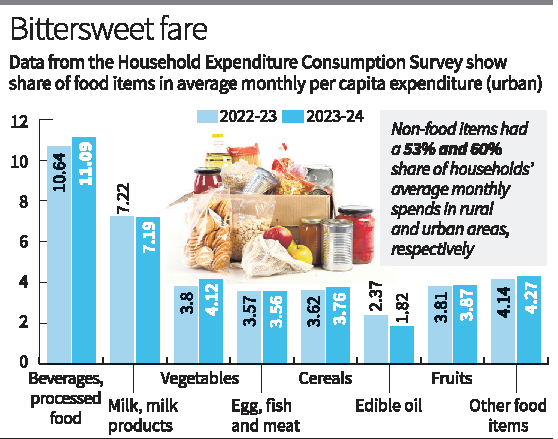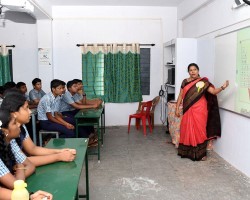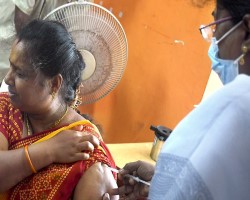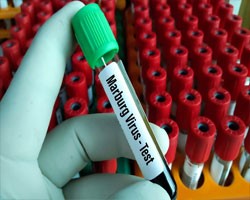UPSC Current Affairs
TABLE OF CONTENTS |
| Polity and Governance |
|---|
|
|
|
The recent notification by the Ministry of Education regarding the detention policy marks a significant shift in India’s school education system. While aimed at addressing gaps in learning outcomes, the policy has sparked debate about its effectiveness and alignment with broader educational reforms.
Background No Detention Policy (2009): Introduced under the Right to Education Act during the UPA government. Sought to create a stress-free learning environment by: Implementing Continuous and Comprehensive Evaluation (CCE) for holistic assessment. Eliminating the pressure of final examinations up to Class 8.Resulted in a focus on non-academic skills but led to concerns over foundational literacy and numeracy gaps. Policy Revision (2019): The NDA government allowed State governments to reintroduce detention policies. However, implementation was delayed due to the COVID-19 pandemic. Key Features of the New Detention Policy Mandatory Final Examinations: Required at the end of Class 5 and Class 8 to assess competence. Two Chances for Promotion: Students failing the final exam will undergo additional instruction and re-examination after two months. Failure in the re-exam results in detention. Elementary Education Protection: No child can be expelled before completing elementary education. Rationale Behind the Policy Address Learning Gaps: A significant number of students lack foundational literacy and numeracy even after completing primary education. Demographic Dividend: Building an educated and skilled population is essential for harnessing India’s demographic potential. Accountability in Education: Emphasizes the role of society, parents, and schools in ensuring effective learning outcomes. Challenges and Criticism Regressive Approach: Reintroducing a single final examination contradicts the National Education Policy (NEP) 2020, which advocates for: Formative assessments. Self and peer evaluations. A holistic, multidimensional progress report card. Impact on Public Schools: CBSE-affiliated and private schools may adapt, but State-run schools may struggle due to: Lack of resources. Political and social challenges. Risk of Exclusion: Private schools may misuse the policy to expel low-performing students, necessitating safeguards. Focus on Rote Learning: A single test as the determinant of promotion could promote rote learning, rather than fostering comprehensive skill development. Way Forward Align with NEP 2020: Focus on formative and competency-based assessments rather than summative exams. Teacher Training: Equip teachers to address foundational literacy and numeracy gaps effectively. Inclusive Education: Ensure policies are implemented without marginalizing vulnerable students. Community Participation: Promote collective efforts involving schools, parents, and society to improve learning outcomes. |
|
|
|
Relevance for UPSC:
GS II (Governance, Social Justice): Education policies, role of government, challenges in implementation. GS III (Economic Development): Importance of human capital in achieving demographic dividend. Essay & Ethics: Education reforms, societal accountability, and equity in learning opportunities. Key Terms: Right to Education, NEP 2020, no detention policy, foundational literacy and numeracy, learning outcomes, summative vs formative assessment. |
|
|
|
The Smart Cities Mission (SCM), launched by the Ministry of Housing and Urban Affairs in June 2015, has been instrumental in modernizing urban education infrastructure through initiatives like smart classrooms and digital libraries. A recent study by the Indian Institute of Management, Bangalore, highlights the significant impact of these initiatives.
Key Highlights Smart Classrooms Initiative: Impact on Enrolment: A 22% increase in enrolment in government schools between 2015-16 and 2023-24, as reported by 19 cities. Scale of Implementation: 71 cities developed 9,433 smart classrooms across 2,398 government schools. Top States: Karnataka leads with 80 smart classroom projects, followed by Rajasthan (53), Tamil Nadu (23), and Delhi (12). West Bengal is among the lowest, with only 2 projects. Teacher Feedback: Teachers report improved learning experiences and attendance due to smart classrooms. Special training enhanced teachers' comfort in using smart classroom technology, with senior secondary teachers showing the highest preference. Digital Libraries: Infrastructure: 41 cities developed 7,809 seats in digital libraries. Notable Examples: Cities like Raipur (Chhattisgarh) and Tumakuru (Karnataka) have significantly supported students preparing for competitive exams through digital resources. Smart Cities Mission Overview: Objective: Promote cities with core infrastructure, a decent quality of life, and a clean, sustainable environment using "smart" solutions. Progress: As of November 2024, 91% of projects under SCM have been completed. SAAR Initiative (2022): Platform to bridge academia and government for urban innovation research. 50 impact assessment studies initiated under the “Sameeksha Series,” involving: 6 Indian Institutes of Management (IIMs). 8 Indian Institutes of Technology (IITs). 3 Schools of Planning and Architecture. 12 specialised research institutes. Significance Educational Transformation: Smart classrooms and digital libraries are enhancing access to quality education and improving enrolment in government schools. Capacity Building: Teacher training initiatives are fostering the effective use of digital tools, aligning with modern educational standards. Urban Development and Education. Integration of education reforms into urban planning reflects the mission's holistic approach to development. Challenges Unequal Distribution: States like West Bengal have limited smart classroom projects, indicating potential disparities. Sustainability: Long-term maintenance of infrastructure and digital resources remains a challenge. Way Forward Focus on Lagging States: Ensure equitable implementation across all States, especially those with fewer projects. Enhanced Collaboration: Strengthen the SAAR initiative to include more research and feedback from local stakeholders. Sustainability and Scalability: Develop strategies for sustainable operations and expansion of smart classroom initiatives. |
|
|
|
Relevance for UPSC:
GS II (Governance): Education policies, urban development, and government schemes. GS III (Infrastructure and Development): Smart Cities Mission, digital infrastructure. Essay: Role of technology in education and urban development. Key Terms: Smart Cities Mission, Smart Classrooms, Digital Libraries, SAAR Initiative, Sameeksha Series, teacher training, enrolment growth. |
| International Relations |
|
|
Key Points:
|
|
|
|
Parliament Dissolution: Collapse of the Coalition Government: Reason for Dissolution: Implications: |
|
|
|
Key Development:
The bald eagle, a long-standing symbol of the United States' power and strength, has been officially designated as the national bird of the country. This was formalized by President Joe Biden, who signed legislation amending the United States Code to rectify the absence of an official declaration. Historical Significance: Despite being widely recognized as a national emblem, the bald eagle had not been officially designated as the national bird until now. Cultural and Monetary Presence: 📍The bald eagle first appeared as a symbol on a Massachusetts copper cent in 1776.📍It has since featured on several U.S. coins, including the silver dollar, half dollar, quarter, and various gold coins known as the eagle, half eagle, quarter eagle, and double eagle. 📍The bald eagle's image is also present on military insignia, presidential flags, U.S. currency, and other official documents.Legal Protection: The bald eagle is protected under the National Emblem Act of 1940, which prohibits the hunting or selling of the bird. This legislation underscores the importance of conserving the species, which is indigenous to North America. Significance of the Declaration: The official designation corrects an oversight and reaffirms the bald eagle’s symbolic importance to the United States. The National Eagle Center praised the decision, stating that "no bird is more deserving" of the honor. |
| Economy |
|
|
|
Relevance for UPSC:
GS III (Economic Development): Consumption trends, inequality, rural-urban divide, inflation, and poverty assessment. Essay & Ethics: Social equity and inclusive growth strategies. Key Terms: MPCE, Gini coefficient, CPI, urban-rural gap, consumption inequality. The Household Consumption Expenditure Survey (HCES) findings for 2023-24 reveal important trends in India's economic well-being and consumption patterns: Key Highlights: Increase in Household Consumption: Average household consumption expenditure on a per capita basis rose 3.5% in real terms from August 2023 to July 2024 compared to the previous year. This indicates reduced consumption inequality and a narrowing urban-rural gap. Monthly Per Capita Expenditure (MPCE): Rural MPCE: Increased by 3.53% to ₹2,079. Urban MPCE: Grew by 3.48% to ₹6,996. The urban-rural gap in MPCE declined further to 70% in 2023-24 from 71% in 2022-23 and 84% in 2011-12. Consumption Patterns: Non-Food Items: Account for the majority of expenditure, with a 53% share in rural and 60% in urban areas. Decline in spending on edible oils offset higher spending on items like vegetables amid high food inflation. Consumption Inequality: Gini coefficient (a measure of inequality): Rural areas: Declined from 0.266 (2022-23) to 0.237 (2023-24). Urban areas: Declined from 0.314 (2022-23) to 0.284 (2023-24). The bottom 5%-10% of the population saw the highest increase in MPCE in both rural and urban areas. Poverty and Inflation Insights: Findings contribute to updating the Consumer Price Index (CPI), aiding in poverty estimation and tracking retail inflation trends. Survey Coverage: Data collected from 2,61,953 households across India, with 59% from rural areas. Significance: The results reflect improvements in economic equity, narrowing disparities between urban and rural consumption levels. They emphasize the resilience of rural consumption and the growing focus on non-food expenditure. The decline in the Gini coefficient underlines a reduction in income inequality. This survey is critical for policymakers to design welfare programs, fine-tune inflation measures, and assess the socio-economic impact of government schemes. |
|
|

|
| Science and Technology |
|
|
|
Innovation: Researchers at IIT Bombay have developed a needle-free “shock syringe” that uses high-energy pressure waves (shock waves) instead of needles to deliver drugs painlessly.
Mechanism: Utilizes shockwaves traveling faster than sound to create a microjet of liquid drugs. The device, slightly longer than a ballpoint pen, has a micro shock tube with three sections: driver, driven, and drug holder. Pressurized nitrogen gas generates the microjet, which penetrates the skin gently and rapidly. Key Benefits: Pain-Free Delivery: Patients do not feel the injection. Safe and Precise: Monitored pressure minimizes tissue damage. Cost-Effective: Capable of over 1,000 shots, with only the nozzle needing replacement. Prevents Needle Injuries: Reduces risks of blood-borne diseases due to mishandling of needles. Improves Immunization Drives: Especially useful for children and large-scale vaccination programs. Significance: This innovation could revolutionize healthcare by enhancing patient comfort, safety, and efficiency in drug delivery. |
|
|
|
Key Highlights: Overview of the Outbreak: Rwanda’s Response Measures: About Marburg Virus Disease (MVD): Recent Advances in MVD Management: Significance of Rwanda’s Efforts: |
|
<< 27-Dec-24
|
|
|







